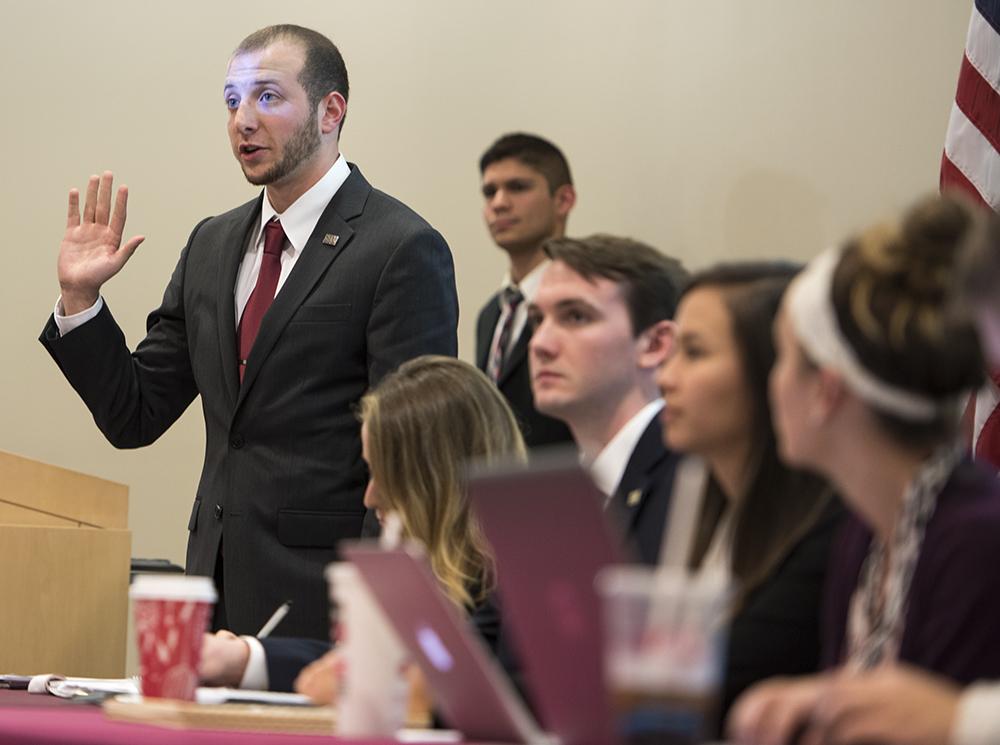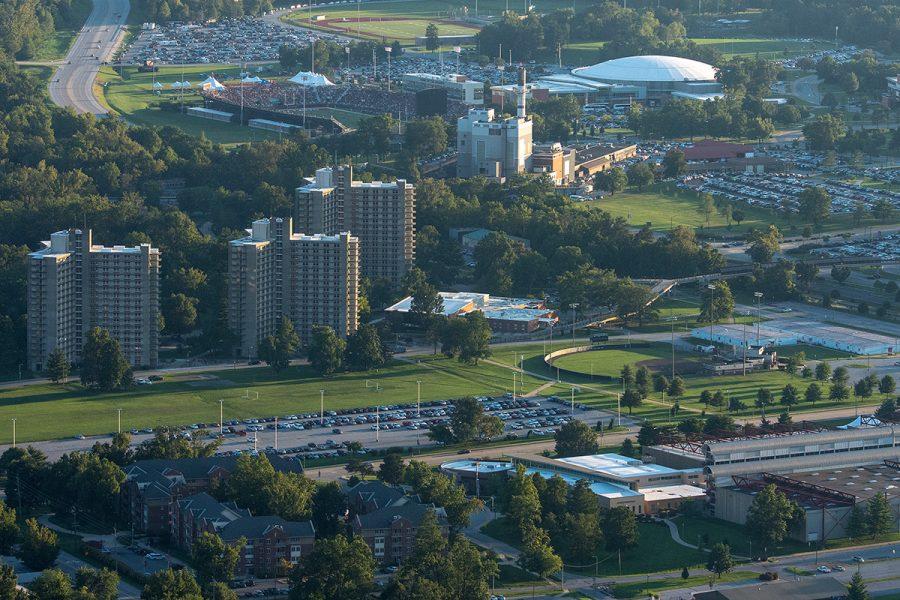Illinois regional universities toil through state budget standoff
March 17, 2017
Illinois’ public university presidents went to Springfield this month to deliver a message: We are at the end of our rope.
It was political theater, orchestrated by the majority-Democratic Senate higher-education committee and aimed at embarrassing Republican Gov. Bruce Rauner as the state slogs through its 21st month without a budget. But whatever the partisan motives for the hastily planned March 7 hearing, nearly all university leaders seized the chance to be heard.
“We no longer have any tissue, any additional cuts that we can cut,” Chicago State University interim President Cecil B. Lucy said. “We are basically down to the bone. We have nothing more to give.”
Advertisement
That message resurfaced again Thursday, as Northeastern Illinois University prepares to shut down next week as 1,100 employees take five required furlough days and hundreds of student employees temporarily lose their jobs. It’s the Chicago campus’ solution for saving money as there are no plans for any funds to come from Springfield this academic year.
Standing outside one of the Northwest Side campus buildings, more than 100 students and faculty and staff members pleaded for Rauner and legislators to end the stalemate.
“Forcing professors to not work is essentially telling us students that we are not important, that we do not deserve to learn,” said senior Katharina Lassaco, 27. “Every day where a teacher is forced to not work is a day that we lose. This time is so valuable, and every minute that is wasted is a minute that we will not get back.”
With no end in sight, Illinois’ unprecedented budget impasse has cut off critical state funding to the state’s public colleges and universities, which received only infrequent and unpredictable funding last year and no money this year as Rauner and the Democrat-controlled legislature have been unable to agree on a fiscal plan for the state.
At universities across the state, hundreds of employees have been laid off, dozens of academic and athletic programs cut, weeks worth of pay erased through furloughs, maintenance projects halted, vendor payments delayed and reserves emptied. And the hardships are growing, particularly at the state’s smaller regional universities that have long served as affordable, four-year options, attracting minorities, low-income students and those who are first in their families to attend college.
“That’s my big concern — that as we go into this next phase of the crisis, with no budget in sight, SIU and many other universities are going to be forced to dismantle and remove units of university operations,” SIU President Randy Dunn said. “If we don’t find a way forward, we have a lot of universities getting ready to walk off the cliff.”

Most Illinois regional colleges started as teacher training institutions, known as normal schools, between 1867 and 1895.
Advertisement*
Many became part of the state university system in the mid- to late 20th century, transforming into sprawling campuses with thousands of students, dozens of degrees and multiple colleges. Illinois’ other regional universities include Northern Illinois University in DeKalb, Western Illinois University in Macomb, Eastern Illinois University in Charleston and Governors State University in University Park.
About 25 percent of students enrolled in Illinois universities attended public institutions in 2015, according to the Illinois Board of Higher Education. Of that, about 48 percent chose one of the regional institutions.
“We are providing an entrance ramp to the middle class for those students who wouldn’t go to college at all,” said Elaine Maimon, president of Governors State. “The regional universities are expanding the number of people who are going to college.”
But the past two years have been a grind financially.
NIU, for example, received about $26.4 million to cover a year of operations, compared to more than $91 million in 2015, the most recent year of full state funding. The university has cut 50 academic programs, President Doug Baker said at last week’s Senate hearing.
At EIU, nearly 200 employees were laid off last year, and the number of furlough days required for other workers added up to nearly a one-month salary cut, President David Glassman told senators.
Nearly 300 jobs were cut at SIU’s campus in Carbondale, and dozens more in Edwardsville and at the medical school, Dunn said.
WIU, meanwhile, laid off and furloughed hundreds of workers, and cut academic and athletic programs, President Jack Thomas said.
Without state support soon, university leaders say they may need to make more drastic cuts.
Governors State would look at eliminating one of its four colleges, Maimon said.
At SIU, cuts worth tens of millions of dollars in staffing and programs would potentially have to be made, Dunn said.
“There’s a whole bunch of incredible research opportunities for undergraduate students that draw a lot of students here,” said SIU student body president Jared Stern, a senior from Vernon Hills who is studying aviation. “If you start removing them, it degrades the integrity of the university and what it stands for.”

As state support has declined, enrollment also has suffered. Total enrollment dropped 4 to 13 percent at most schools this fall, and freshman classes shrank by as much as 25 percent compared with the prior year.
At Chicago State, which has lost more than half its enrollment in the past six years, there were only 86 first-time, full-time freshmen this fall, down from 200 the year prior.
“The confidence in public higher education has been shaken,” NEIU interim President Richard Helldobler said. “It takes a while to get that confidence back when your public institutions, which are there for the public good, have foundational harm with the taxpayers.”
The slumping enrollment comes as the number of high school graduates is declining and there is more competition for them. Illinois is projected to graduate nearly 30,000 fewer high school students annually by 2032, a loss of almost 19 percent, according to a December study from the Western Interstate Commission for Higher Education.
At the same time, more local students are shunning Illinois schools. About 45 percent of high school graduates left Illinois to attend college in 2015 — or just over 18,000 students, according to the Illinois Board of Higher Education. That compares with 29 percent who left Illinois for college in 2002.
And the regional universities will now face increasing competition from the flagship University of Illinois, which plans to boost student enrollment 15 percent over the next five years. To do so, U. of I. plans to recruit more downstate — which could draw students away from some of the regional university campuses.
While the budget woes also have affected U. of I. and Illinois State University, the larger institutions can rely more on private giving and other sources of revenue. U. of I. saw its highest-ever enrollment last fall while Illinois State drew its largest freshman class in three decades.
“Large research universities continue to be the only post-secondary institutions in the Midwest who are reporting enrollment increases, while small, private colleges, two-year community colleges, and comprehensive regional universities struggle to maintain enrollments,” Western Illinois University administrators wrote in a recent report.
But for many students, the regional schools are their only option for a four-year degree, NEIU student Nicholas Martinez said. And the precarious future of their schools weighs heavily on their minds.
“It’s a house of cards,” said Martinez, 24. “All it takes is one more card to fall, and the whole thing’s collapsing.”
___
(c) 2017 the Chicago Tribune
Visit the Chicago Tribune at www.chicagotribune.com
Distributed by Tribune Content Agency, LLC.
Advertisement








